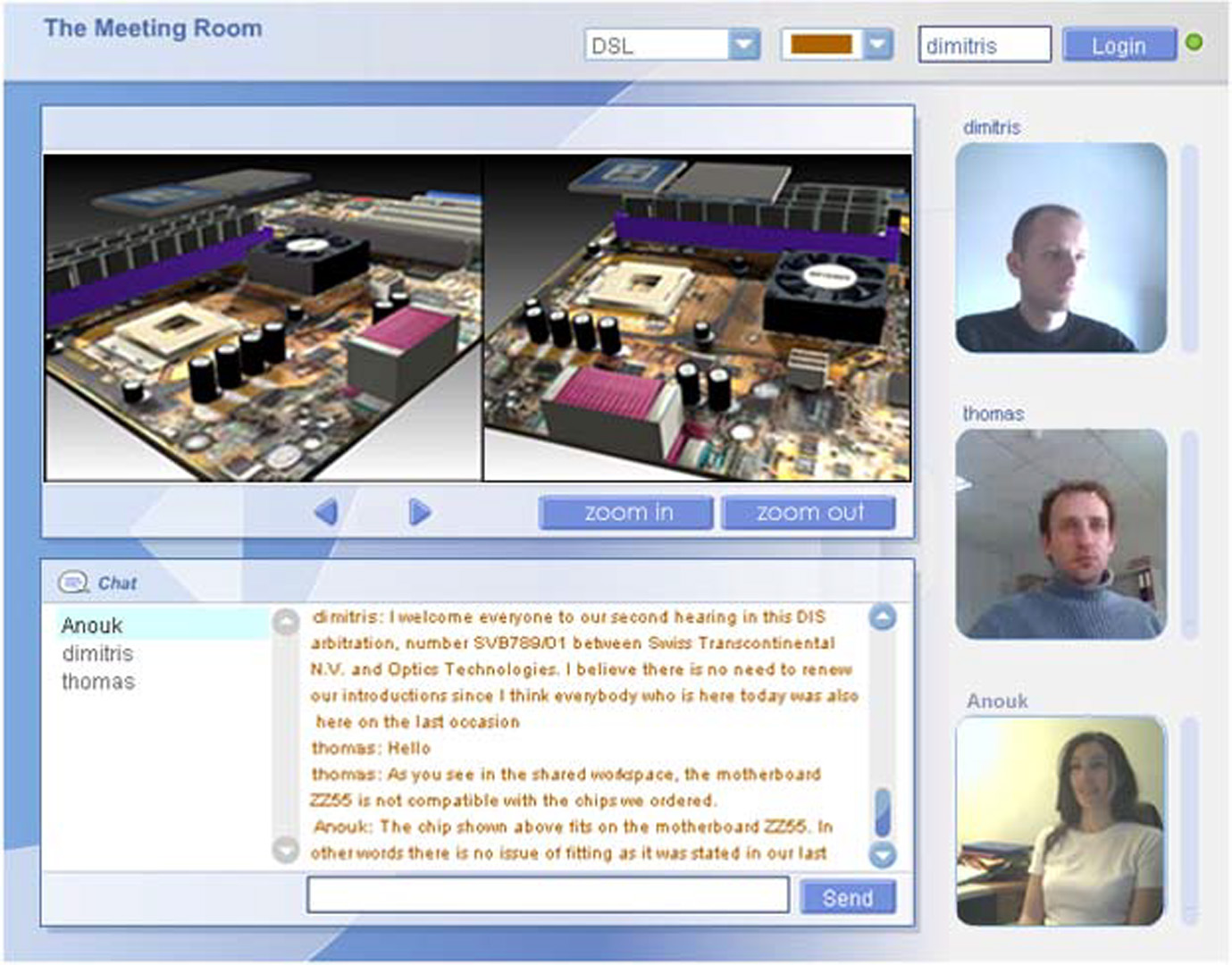“The Fourth Party in Online Arbitration as a Shared Virtual Workspace” by Protopsaltou and Magnenat-Thalmann
Conference:
Type(s):
Title:
- The Fourth Party in Online Arbitration as a Shared Virtual Workspace
Session/Category Title: Technical Track
Presenter(s)/Author(s):
Moderator(s):
Abstract:
This paper considers collaboration, implementation, and legal issues that arise from using a shared virtual workspace during online arbitration. Based on the concept of the fourth party, the authors developed an interface that influences the process of communication and negotiation, something that adds decision-making value to an arbitrator. The paper begins with a discussion of the legal arbitration issues that will influence our design methodology. We analyze the group dynamics and how a virtual workspace may work toward improving some of the human interactions that take place during an arbitration proceeding. We then describe the design methodology of the shared virtual workspace and consider some implementation results.
References:
[1]
Bucciarelli, L. L. 2002. Between Thought and Object in Engineering Design. Design Studies, Vol. 23, No. 3, 219–231.
[2]
Clark, H. H., & Brennan, S. E. 1991. Grounding in communication. In L. B. Resnick, R. M. Levine, & S. D. Teasley (Eds.). Perspectives on socially shared cognition, 127–149. Washington, DC: APA.
[3]
Dimicco, J. M., Pandolfo, A., Bender, A. 2004 Influencing Group Participation with a shared display.
[4]
Fussell, S. R., Kraut, R. E., & Siegel, J. 2000. Coordination of communication: Effects of shared visual context on collaborative work. Proceedings of CSCW 2000, 21–30. NY: ACM Press.
[5]
Jarrosson, C. 2001. La notion d’arbitrage. Paris, L.G.D.J, 1987
[6]
Karsenty, L. 1999. Cooperative work and shared visual context: An empirical study of comprehension problems and in side-by-side and remote help dialogues. Human-Computer Interaction, 14(3), 283–315.
[7]
Maillot, P.-G. 1990. Using quaternions for coding 3D transformations, A. S. Glassner, editor, Graphic Gems, pages 498–515. Academic Press, Boston, MA.
[8]
Reid, F., Ball, L., Morley, A. and Evans, J. 1997. Styles of Group Discussion in Computer-Mediated Decision Making. British J. of Social Psychology, vol 36, 3 (1997), 241–262.
[9]
Redfern, A. and Hunter, M. 1999. Law and Practice of International Commercial Arbitration. 3rd edn, Sweet & Maxwell, London, 1999), p. 3–4.
[10]
Katsh, E. 2002. Online Dispute Resolution: The Next Phase, 7-2 Lex Electronica, at <www.lex-electronica.org/articles/v7-2/katsh.htm>.
[11]
Veinott, E., Olson, J., Olson, G., & Fu, X., 1999. Video helps remote work: Speakers who need to negotiate common ground benefit from seeing each other. Proceedings of CHI ’99, 302–309. NY: ACM Press.





